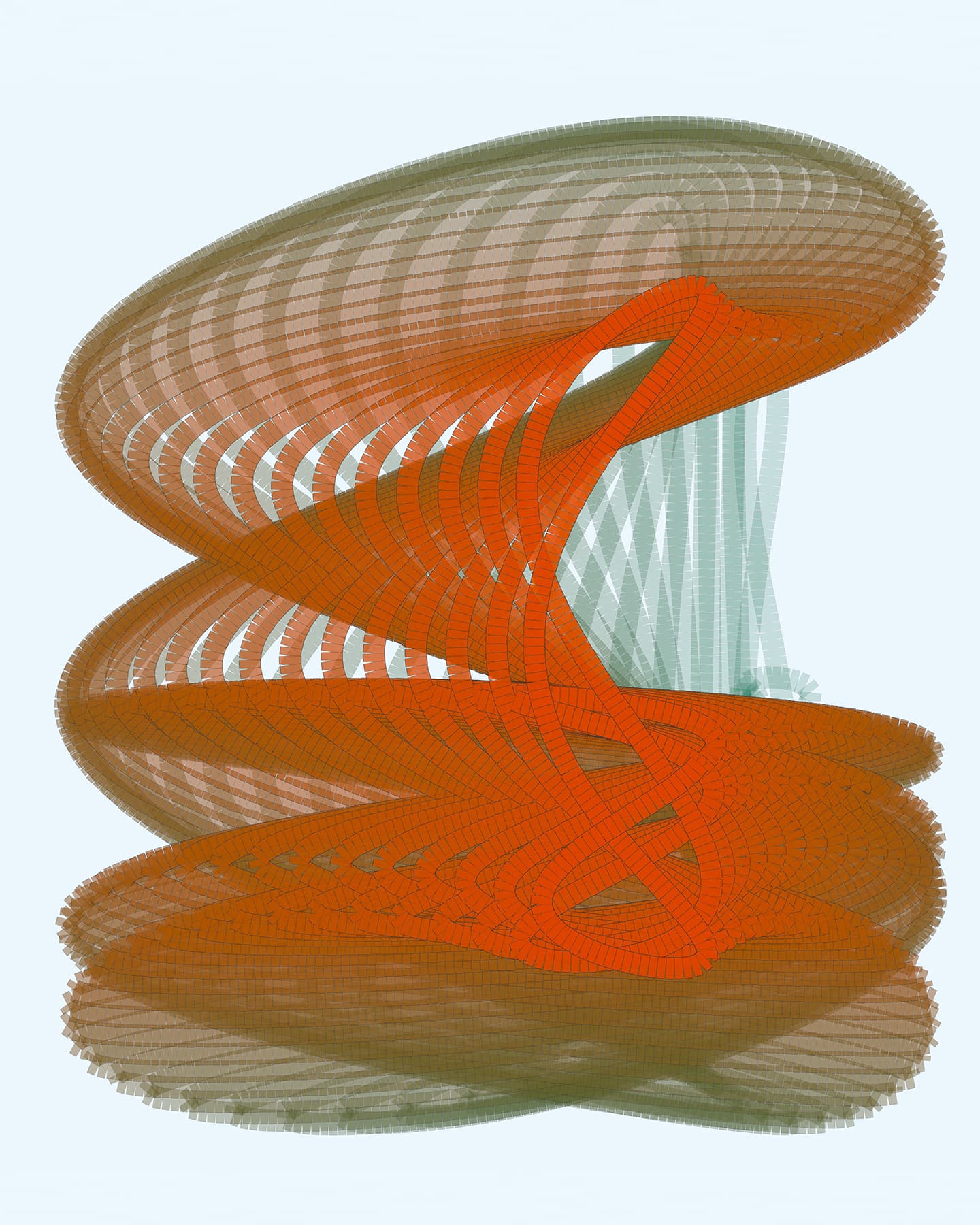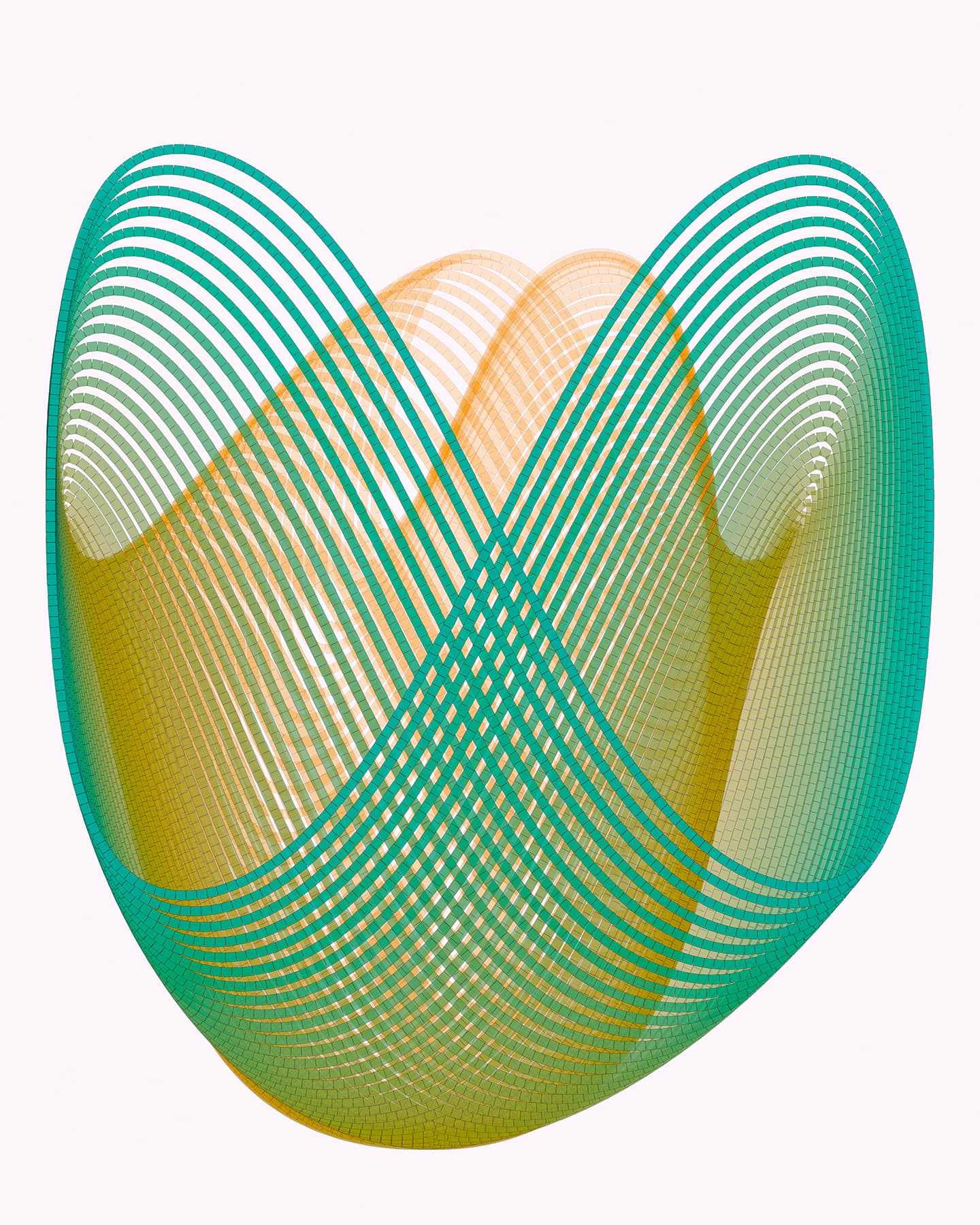2014 Joint Mathematics Meetings
Mayer Schwartz
Artists
Mayer Schwartz
Retired Computer Scientist
Portland, Oregon
Statement
As a computer scientist, I have long been fascinated with the intersection of art, mathematics, and computer science. Abstract visual artists who have enlightened and inspired me include the Constructivist artists Josef Albers, Ellsworth Kelly, and Piet Mondrian. Recently, I have written software specifically for generating mathematically oriented abstract art. The software uses geometric transformations as its underlying principle, while also allowing for the precise specification of color, texture, and opacity; it has a rich, descriptive input language as well as a high quality rendering engine. This software has enabled me to explore abstract, mathematically oriented art which computer generation makes feasible.
Artworks

Perambulation #2
28" x 24" (framed)
pigment inkjet print
2013

Perambulation #5
28" x 24" (framed)
pigment inkjet print
2013